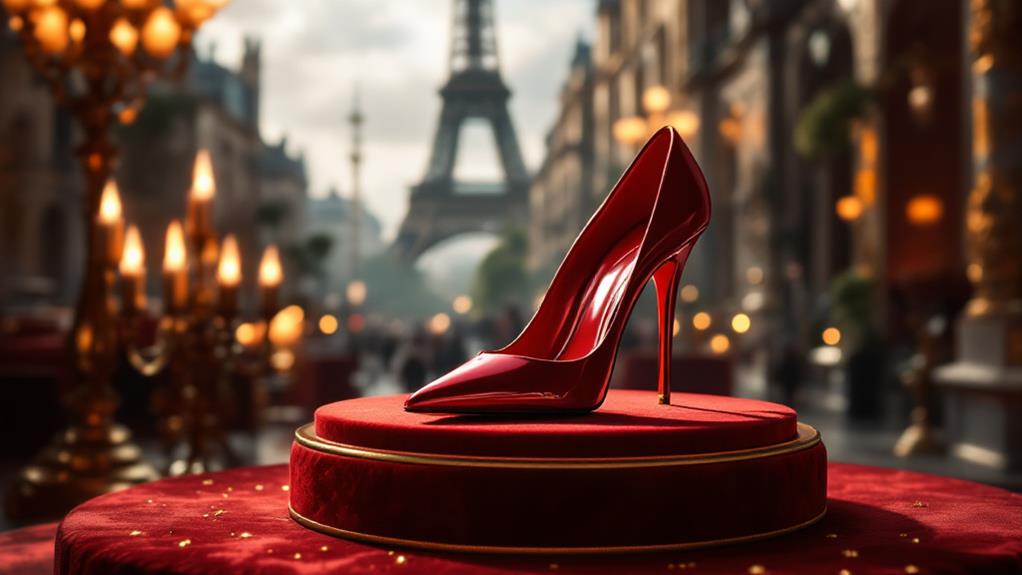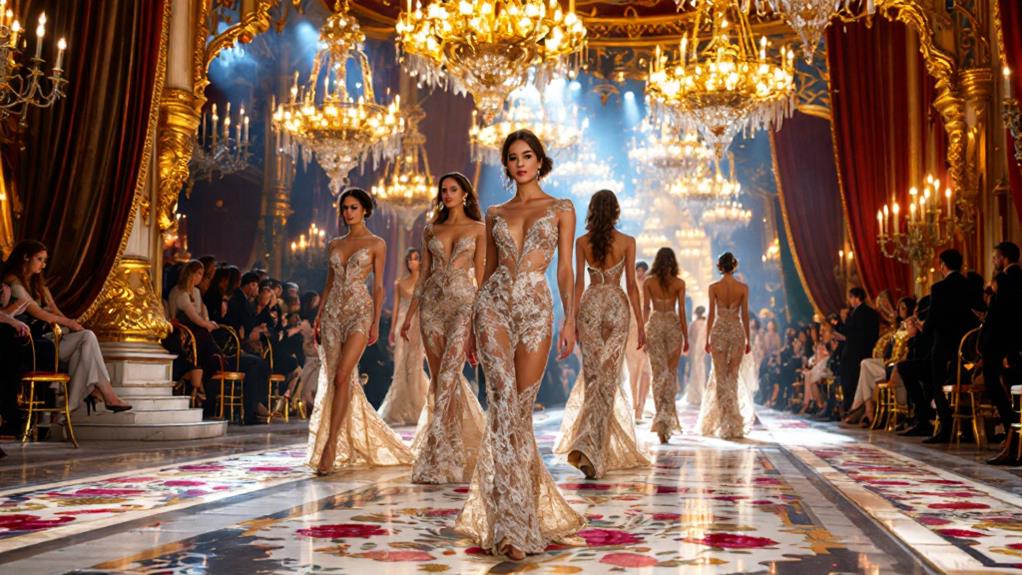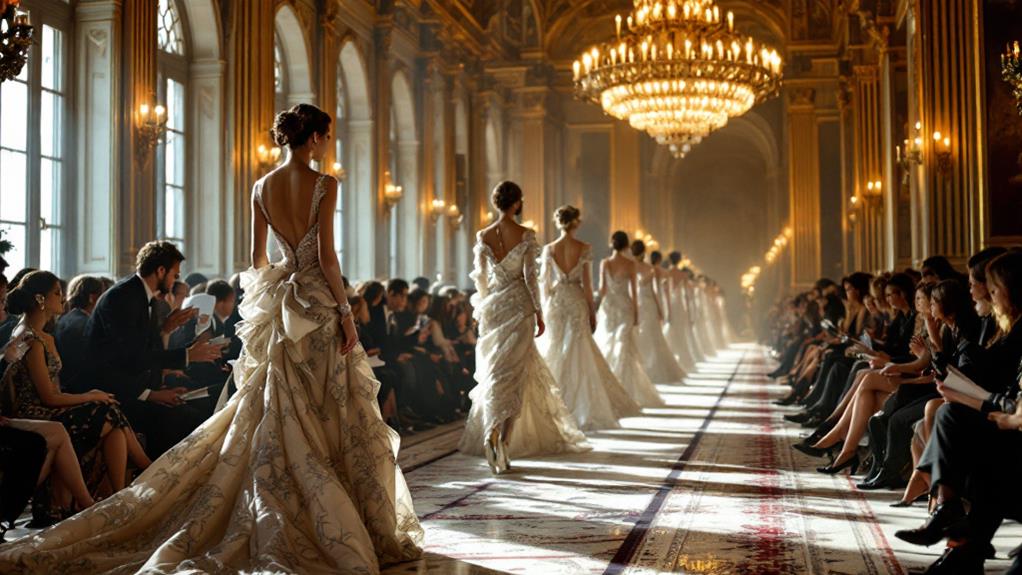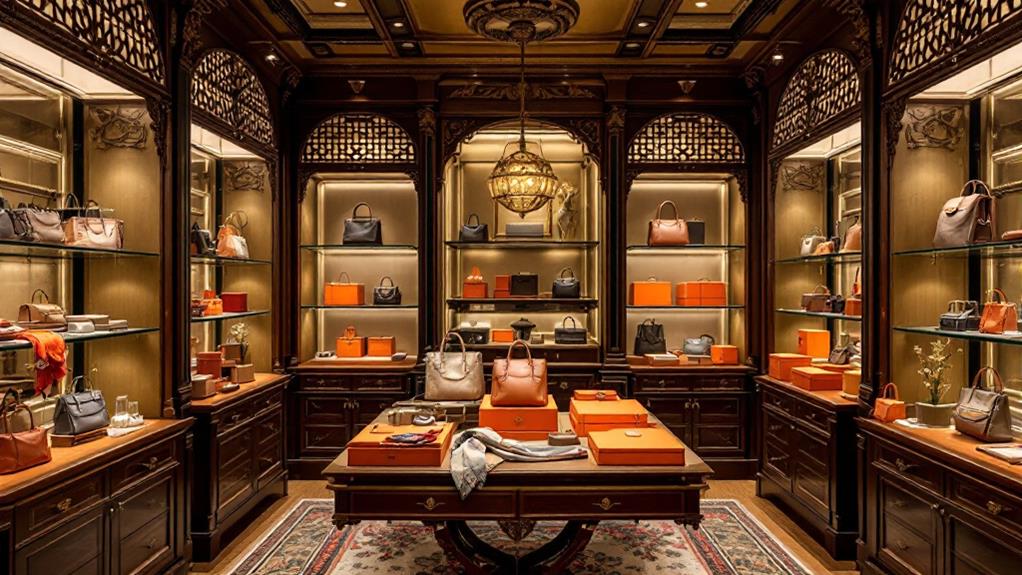Luxury Fashion Brands: The History of Burberry
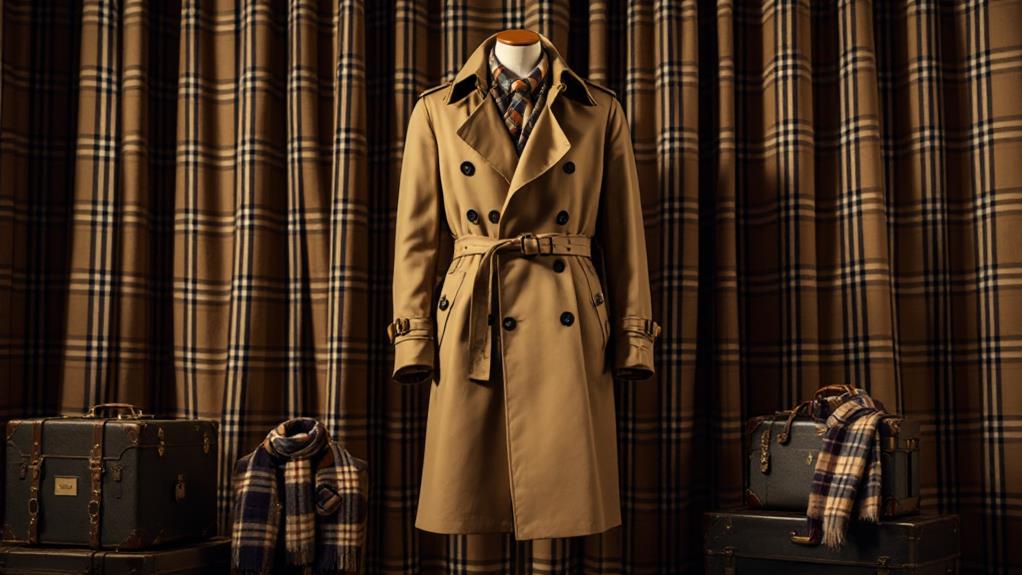
Uncover Burberry's storied odyssey since 1856 when Thomas Burberry founded it in Basingstoke, England, focusing on outdoor wear. You'll learn how Burberry pioneered the gabardine fabric, enhancing its acclaim through Arctic expeditions. Its trench coat became iconic during WWI, merging style with utility. Royal warrants from British monarchs showcased Burberry's commitment to quality. As the brand expanded globally, it welcomed digital growth and sustainability, announcing initiatives like climate positivity by 2040. Recent leadership changes focus on inclusivity and modern consumer trends. There's much more to reveal about this brand's impact on luxury fashion.
Origins and Early Innovations
Founded in 1856 by the ambitious 21-year-old Thomas Burberry, the brand started in Basingstoke, England, with a focus on crafting outdoor attire suited for the unpredictable British weather. Burberry quickly distinguished itself with cutting-edge fabrics and designs. In 1879, Thomas Burberry invented gabardine, a groundbreaking fabric that was both breathable and weatherproof. This fabric, patented in 1888, became a cornerstone of the brand's offerings and helped cement its reputation for quality.
In 1893, Burberry's gabardine gained international acclaim when Dr. Fridtjof Nansen, a renowned polar adventurer, wore it during his Arctic expedition. This highlighted the fabric's durability and suitability for extreme conditions. The brand's flair for advancement didn't stop there. In 1912, Burberry patented the Tielocken coat, an early version of the iconic trench coat. Although initially designed for civilians, it later evolved into a military staple, embodying Burberry's blend of practicality and style.
In 1901, the brand adopted its British heritage by introducing the equestrian knight logo, chosen through a public competition. This emblem has become a lasting symbol of Burberry's identity, representing its commitment to excellence and advancement.
Military Influence and Global Reach
Imagine the trenches of World War I—grim, muddy, and unforgiving. You're a soldier seeking refuge from the harsh elements, and it's here that Burberry's trench coat becomes indispensable. Designed as military equipment, this coat set the standard for functional fashion. As the initial luxury brand to master the art of combining style with practicality, Burberry's gabardine fabric offered performance and durability that soldiers relied on.
Burberry's military influence didn't stop with WWI. By WWII, the company was a key supplier of military apparel to the British Army, further cementing its reputation for quality outerwear. These garments weren't just for soldiers; they captivated the outerwear market, laying the foundation for Burberry's global reach.
Strategic collaborations and groundbreaking marketing strategies propelled the brand beyond Britain. Here are a few milestones:
- Initial Paris Store: Opened in 1909, marking the brand's European footprint.
- Global Expansion: By 1965, Burberry exported one in five coats, illustrating international demand.
- Entry into China: The 1994 expansion underscored Burberry's global ambitions.
With each step, Burberry evolved from a military supplier to a global fashion icon.
Royal Recognition and Expansion
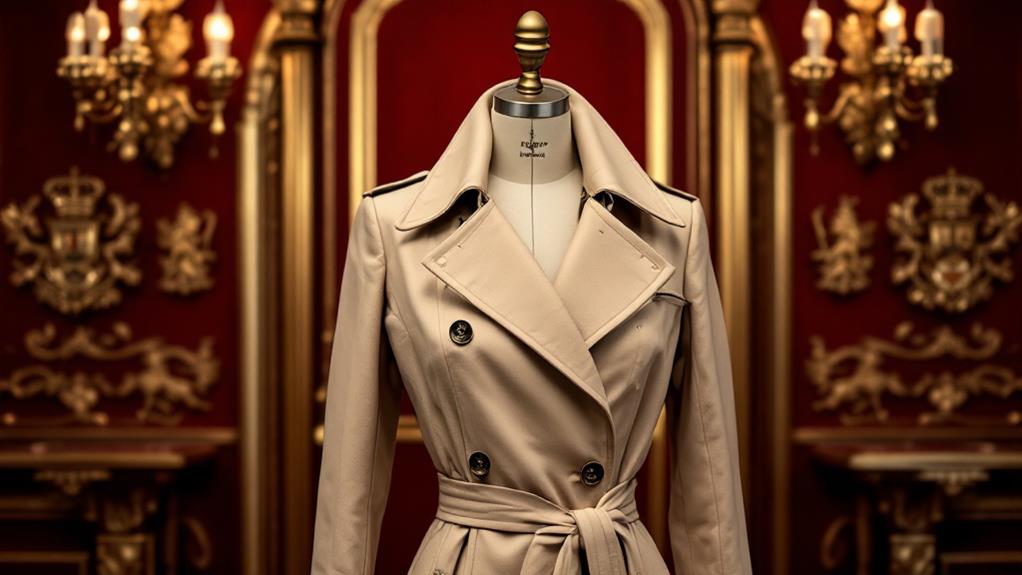
Amid the accolades and milestones that define Burberry's illustrious history, its royal recognition stands out as a tribute to its unparalleled craftsmanship and quality. In 1919, Burberry received its initial Royal Warrant as a Tailor from HM King George V, establishing its reputation for quality and service among British royalty. This prestigious acknowledgment was further improved in 1955 when HM Queen Elizabeth II granted Burberry a Royal Warrant as a Weatherproofer, solidifying its status as a luxury brand trusted by the monarchy.
These royal endorsements not only celebrated Burberry's heritage but also fueled its expansion. By 1965, Burberry had become a prominent exporter, producing one in five coats in Britain, a confirmation of its growing international presence. The brand's appeal wasn't limited to the British Isles; it opened its premier store in Paris in 1909, marking a significant step in its global expansion.
Burberry's connection to military personnel and the upper echelons of society only strengthened with time. In 1990, it received a Royal Warrant from HRH The Prince of Wales as an Outfitter, further cementing its reputation for excellence and luxury.
Modernization and Digital Growth
Burberry's modernization quest is defined by its strategic adoption of both corporate growth and digital innovation. In 2002, you witnessed Burberry's leap into the public domain when it became a publicly quoted company on the London Stock Exchange. This crucial moment marked a considerable step in its modernization path, broadening its reach in the global luxury market. By 2010, Burberry made history by livestreaming a fashion show, setting a precedent in digital innovation for luxury fashion brands. This move highlighted Burberry's dedication to embracing new technologies and staying ahead of the curve.
You'd notice Burberry's retail distribution strategy shifting notably towards a direct-to-consumer model by 2011, with an increase from 43% to 64%. This change provided a more personalized shopping experience. Fast forward to 2014, and Burberry's footprint expanded to over 500 stores worldwide, reinforcing its position in the global luxury market.
In 2020, Burberry opened a groundbreaking Social Retail store in Shenzhen, integrating social media with physical retail for improved customer engagement. Here's a snapshot of Burberry's modernization efforts:
- Entering the London Stock Exchange in 2002.
- Pioneering digital fashion shows in 2010.
- Opening Social Retail store in 2020.
Sustainability and Diversity Efforts
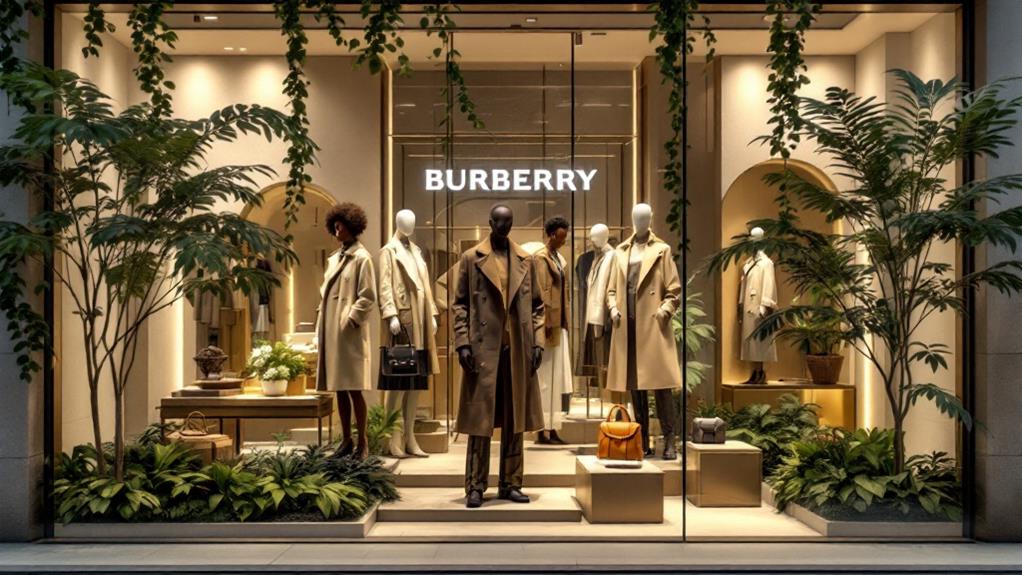
While many luxury brands have only recently begun prioritizing sustainability and diversity, Burberry has been making significant strides in these areas for years. In 2018, Burberry launched the Rainbow Vintage check, a lively symbol celebrating diversity and supporting the LGBTQ+ community. The company made donations to multiple LGBTQ+ organizations, underscoring its commitment to inclusivity.
Burberry's dedication to sustainability is similarly impressive. The brand aims for climate positivity by 2040, with a concrete plan to reduce supply chain emissions by 46% by 2030. These ambitious goals highlight Burberry's proactive approach to environmental responsibility. In 2022, they took a stand for ethical fashion by banning the use of exotic skins in their collections, ensuring their products align with modern values.
The Burberry Foundation, established in 2008, plays a vital role in promoting youth creativity and community engagement, further emphasizing the brand's commitment to societal impact. During the COVID-19 pandemic in 2020, Burberry showcased its adaptability and social responsibility by repurposing its Castleford factory to produce PPE for the UK National Health Service. These efforts demonstrate how Burberry integrates sustainability and diversity into its core values, setting an example in the luxury fashion industry.
Recent Leadership and Strategic Moves
Building on its strong foundation of sustainability and diversity, Burberry's recent leadership and strategic decisions reflect a dynamic leap towards modernity and inclusivity. In April 2022, Jonathan Akeroyd took over as CEO, following Marco Gobbetti's significant transformation of the brand. Akeroyd's leadership has been crucial in steering Burberry towards a future-focused trajectory. His approach emphasizes embracing sustainability and inclusivity as core tenets of the brand's identity.
Under Akeroyd's leadership, Daniel Lee was appointed as Chief Creative Officer in September 2022. Lee's influence has introduced a refreshed brand image and designs specifically crafted for the modern consumer. His creative direction aims to cater to evolving tastes, ensuring that Burberry remains relevant and appealing.
Recent strategic moves have also included enhancing global representation. In July 2022, the company appointed Thai artist Vachirawit Chivaaree as its initial Global Brand Ambassador from South Asia-Pacific. This move underscores Burberry's commitment to diversity and inclusivity.
Here's a summary of Burberry's recent strategic shifts:
- Leadership Change: Jonathan Akeroyd as CEO, Daniel Lee as Chief Creative Officer.
- Brand Image Refresh: New designs targeting modern consumers.
- Global Representation: Appointment of Vachirawit Chivaaree as Global Brand Ambassador.

